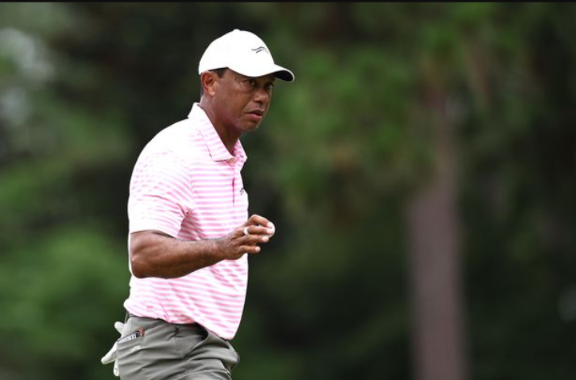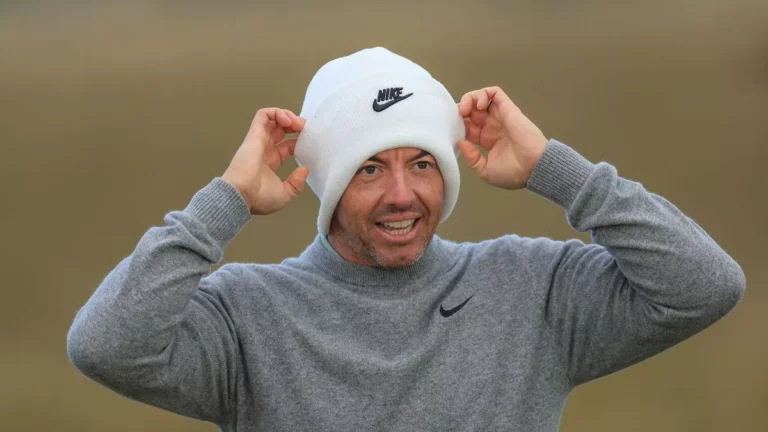Is There Tomorrow for Tiger Woods?
In “Rocky III,” Sylvester Stallone’s Rocky Balboa is being relentlessly pummeled by Carl Weathers’ Apollo Creed. Defeated, Rocky mutters that he will be ready “tomorrow.” Creed’s sharp reply is unforgettable: “There is no tomorrow.” Tiger Woods, even after a storied career, still believes in his tomorrows. He remains convinced he can win again at the…
In “Rocky III,” Sylvester Stallone’s Rocky Balboa is being relentlessly pummeled by Carl Weathers’ Apollo Creed. Defeated, Rocky mutters that he will be ready “tomorrow.” Creed’s sharp reply is unforgettable: “There is no tomorrow.”
Tiger Woods, even after a storied career, still believes in his tomorrows. He remains convinced he can win again at the highest levels of golf, holding onto the hope that another triumph is within reach.
When Woods arrived at Pinehurst for the 124th U.S. Open Championship, the anticipation was tangible both for him and his fans. This marked his first competitive U.S. Open since 2020. For many, it conjured memories of his near victories at Pinehurst: his narrow miss in 1999 when Payne Stewart famously clinched the title with a dramatic 18th-hole putt, and again in 2005, when late bogies left him behind Michael Campbell. Tiger’s return this year was possible only due to a special exemption from the USGA, having skipped the 2014 Pinehurst U.S. Open.
However, the aura that once struck fear into his competitors is a shadow of its former self. Woods is now respected more for his past glories than for any present threat. His performance at Pinehurst, with rounds of 74 and 73, left him missing the cut by two shots. In his post-round interview, Woods admitted, “Well, it was probably the highest score I could have possibly shot today.”
The challenges Woods faces are profound, from multiple surgeries on his 48-year-old body to limited practice and competitive rounds. Before this U.S. Open, his last tournaments were the PGA Championship at Valhalla, where he missed the cut, and the Masters, where despite setting a record for consecutive cuts made, he finished last with rounds of 82 and 77.
Woods remains confident he can still compete, but the numbers tell a different story. Since his remarkable comeback victory at the 2019 Masters, his 15th major title, Woods has played in thirteen majors, missing the cut in six and failing to break into the top 20 in the others.
As the famed NFL coach Bill Parcells once said, “You are what your record says you are.” For Woods, his recent scores reflect a reality far removed from his peak, where he could turn potential disasters into triumphs. The art of grinding out a win has become a taxing chore, yet Woods insists he is close to regaining his form.
Today, Woods balances his time between competing and his role as a player director on the PGA Tour policy board, focusing on negotiations with the Saudi Arabian Public Investment Fund. There’s also talk of him captaining the U.S. Ryder Cup team in 2025 and spending time with his teenage children.
While Woods’ legacy is secure, his physical condition limits his preparation, and the notion of competing without sufficient practice is unrealistic. Woods has avoided heavy practice to prevent further injury, but this leaves him underprepared for major competitions.
Tiger Woods is one of the greatest golfers of all time, his name etched in history. Even if he never wins again, his influence on the game is immeasurable. Yet, if his struggles continue, the question becomes how much longer he will pursue a path with diminishing returns.
The relentless belief in himself, the core of his greatness, still burns within him. After Pinehurst, his next challenge is The Open Championship at Royal Troon, where he will vie for his fourth Claret Jug. Woods’ impact on golf is immense, inspiring countless professionals who now shine in their prime.
Woods has said he doesn’t want to be a ceremonial player with no chance of winning. Yet, struggling merely to make cuts is his new normal. A deep discussion with Woods about his future is unlikely, as he often deflects probing questions from the media.
Tiger Woods is up against time and pressure from various fronts. The inner fire that once propelled him to greatness needs rekindling. Does that spark still exist? Verbally, Woods says yes, but his performances suggest otherwise.
Without a profound commitment, the answer echoes Apollo Creed’s words to Rocky:
“There is no tomorrow.”






